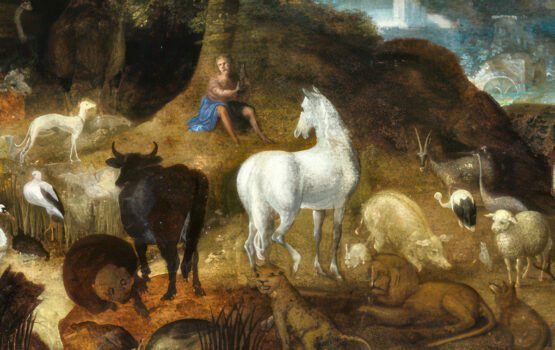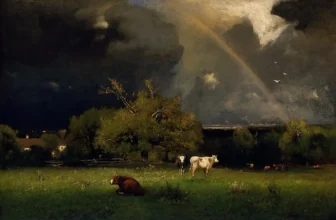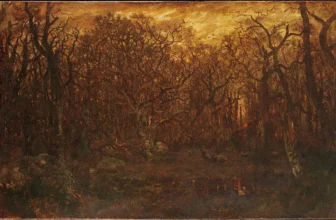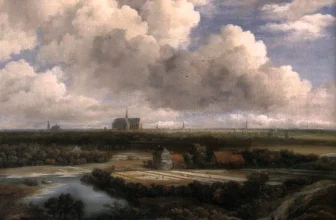What are Jacob Savery’s Famous Paintings
The Dutch Golden Age, spanning the late 16th to early 17th centuries, was an epoch of extraordinary cultural, scientific, and artistic progress. While the period is best known for figures like Rembrandt and Vermeer, many other artists laid the groundwork for what would become one of the most revered eras in Western art. Among them was Jacob Savery (1565–1603), a Flemish-born painter and etcher, who played a pivotal role in developing realistic landscape and animal painting in the Northern Renaissance tradition. Though his name is not as globally recognized today, his impact is considerable, and his works still command attention and admiration in prominent museums and private collections.
This story explores Jacob Savery’s artistic legacy, his most famous works, his influences, his personal journey, and his enduring place in the history of art.
The Life and Story of Jacob Savery
Jacob Savery was born in 1565 in Kortrijk, Flanders (modern-day Belgium), a region then caught in the grip of religious and political upheaval. The Dutch Revolt against Spanish rule led many Protestant families, including the Saverys, to flee Flanders. Around 1584, the Savery family settled in Haarlem, and later in Amsterdam, both cities known for their flourishing artistic communities.
Jacob trained under the influential painter Hans Bol, who was known for miniature landscapes and genre scenes. Bol’s style left a deep impression on the young Savery, who would carry these influences into his own work. But Jacob would go further: he injected a new vitality and realism into his landscapes, especially in his representations of nature and animals, which would eventually influence a generation of painters, including his own relatives.
In Amsterdam, Jacob quickly gained recognition not only as a painter but also as an etcher. His works show a masterful combination of technical precision and poetic observation. He married and had several children, including Jacob Savery the Younger, but perhaps his most influential familial connection was as the uncle and early teacher of Roelant Savery, who became one of the most celebrated animal painters of the period.
Jacob Savery died in 1603, at just 38 years old, possibly due to the plague. Despite his short life, his output was prolific and influential.
Jacob Savery’s Most Famous Paintings
Though not as widely known as the masterpieces of Rembrandt or Bruegel, Jacob Savery’s works are exceptional in their detail, liveliness, and early modern realism. Some of his most famous paintings include:
1. “The Garden of Eden with the Fall of Man” (ca. 1600)
Arguably Savery’s most iconic work, this painting is a lush, fantastical landscape populated with a staggering array of animals, both real and mythical, lions, parrots, camels, unicorns, and dragons co-exist in a utopian setting. Adam and Eve are shown in the moment of temptation, but it is the surrounding nature that dominates the canvas.
The sheer number of animal species depicted in rich detail demonstrates Savery’s encyclopedic knowledge of the animal kingdom, as well as his remarkable skill in composition. The painting is notable for being one of the earliest examples of a “paradise landscape,” a genre that would later be perfected by his nephew Roelant Savery.
2. “Peasants in a Landscape” (circa 1595–1600)
This painting offers a delightful glimpse into rural life, with peasants farming, herding, and engaging in daily tasks against a richly rendered natural backdrop. Savery’s ability to depict the harmony between man and nature was groundbreaking for the time and speaks to his humanist worldview.
3. “A Forest with Boars and Deer” (ca. 1600)
This painting is an early example of a dense, immersive forest scene, moody, mysterious, and filled with detailed renderings of animals in motion. His forest paintings prefigure the Romantic movement in their appreciation for untamed nature.
4. Etching Series: “Landscapes and Animals”
Jacob was also an accomplished etcher. His series of landscape and animal etchings were widely distributed and helped spread his ideas and style across Europe. These prints were instrumental in influencing artists such as Jan Brueghel the Elder and Gillis van Coninxloo.
What Was Jacob Savery Known For?
Jacob Savery is best known for several significant contributions:
1. Pioneering Animal Painting
Savery was one of the earliest Northern European artists to elevate animals to a central place in his compositions, rather than mere background features. His detailed and sympathetic portrayals of wildlife were groundbreaking.
2. Paradise Landscapes
His most enduring legacy may be his development of the “paradise landscape” genre. This fusion of Biblical narrative and naturalistic detail created a new type of painting that would be widely imitated and refined.
3. Etching and Printmaking
Savery was among the first artists in Amsterdam to embrace etching as a serious art form. His prints helped disseminate new approaches to landscape art across Europe.
4. Influencing the Next Generation
Jacob taught and inspired his nephew Roelant Savery, who went on to paint the famous dodo portraits that helped make the now-extinct bird iconic. Jacob’s own approach to painting animals and landscapes laid the foundation for Roelant’s success.
How Many Paintings Did Jacob Savery Create?
The precise number of Jacob Savery’s paintings is difficult to ascertain due to the passage of time and the frequent confusion with works by his nephew Roelant or other contemporaries. However, art historians estimate that Jacob Savery created around 60 to 80 surviving paintings and etchings. These include oil paintings, pen-and-ink drawings, and numerous etchings.
Due to stylistic similarities and overlapping subject matter, attribution has been a significant issue. Some paintings once thought to be by Roelant or other Dutch painters have since been reattributed to Jacob Savery, particularly after close examination of technique and signature styles.
What Is the Most Expensive Painting by Jacob Savery?
Jacob Savery’s works are relatively rare in the art market, and while they do not command the astronomical prices of Rembrandt or Vermeer, they have seen increasing interest among collectors and institutions in recent decades.
The most expensive known sale of a painting by Jacob Savery was “The Garden of Eden with the Fall of Man”, which was auctioned for several hundred thousand euros (approx. €600,000–€750,000). The exact price and buyer were not publicly disclosed, as it was sold through a private dealer.
This painting is considered his magnum opus, thanks to its ambitious scale, masterful technique, and historical importance in the development of paradise landscapes.
Where Are Jacob Savery’s Paintings Located Today?
Jacob Savery’s works are housed in several major museums across Europe and the United States. Some of the key locations include:
Rijksmuseum, Amsterdam (Netherlands): Holds multiple works by Jacob and Roelant Savery, including drawings and etchings.
Kunsthistorisches Museum, Vienna (Austria): A rich collection of Flemish and Dutch painters, including pieces by Savery.
Museum of Fine Arts, Budapest (Hungary): Hosts a number of paradise landscapes and animal studies.
British Museum, London (United Kingdom): Possesses a selection of his etchings and prints.
Louvre Museum, Paris (France): Includes works attributed to the Savery family, though specific attributions vary.
Princeton University Art Museum (USA): Contains drawings and etchings attributed to Jacob Savery.
His paintings also appear in private collections and occasionally surface at auctions, particularly through European houses like Sotheby’s and Christie’s.
Jacob Savery’s Legacy
Though he died young, Jacob Savery’s legacy is multifaceted and enduring. He was a bridge between the Flemish Renaissance and the emerging Dutch Golden Age, introducing themes and techniques that would become central to 17th-century art. His respect for nature, his innovative compositions, and his early adoption of etching helped shape the visual vocabulary of Northern European art.
Jacob Savery is also remembered for his role in the Savery artistic dynasty. His brother and sons were artists, but it was his nephew, Roelant Savery, who most fully realized the promise Jacob had shown. Roelant’s famous images of exotic animals, especially the dodo, owe a considerable debt to Jacob’s pioneering vision.
Art historians continue to reevaluate his oeuvre, and more works are being correctly attributed to him, especially as interest in early landscape and animal painting grows.
A Quiet Innovator of the Dutch Golden Age
Jacob Savery may not be a household name, but his importance in the evolution of Northern European painting is unquestionable. His masterful landscapes, deeply felt animal studies, and groundbreaking “Garden of Eden” compositions deserve a more prominent place in the story of art. As museums continue to reexamine collections and as new scholarship emerges, Jacob Savery’s reputation is slowly being restored.
In an era obsessed with the grandeur of Rembrandt and the intimacy of Vermeer, Savery offers something different but equally vital: a reverence for the natural world and a vision of harmony between humans and their environment, timeless themes that resonate just as deeply today.
This article draws on historical research, museum collections, auction records, and expert attributions to present a comprehensive portrait of Jacob Savery. If you’re curious about viewing his works in person, we recommend visiting the Rijksmuseum in Amsterdam or exploring digital archives such as the British Museum and the MET, which host high-resolution scans of his prints and drawings.
Let the legacy of Jacob Savery inspire a renewed appreciation for the lesser-known masters who helped shape the art we treasure today.




